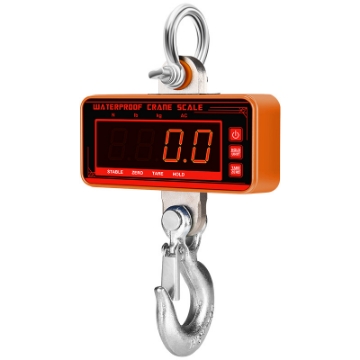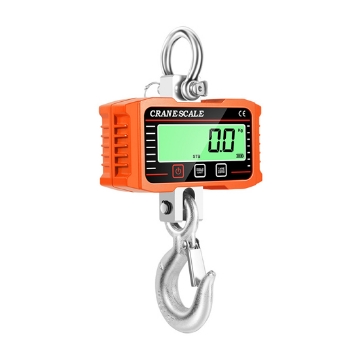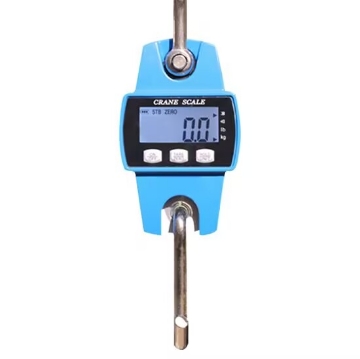Crane Scale
Electronic Crane Scale 60kg/100kg/300kg to 500kg
Wireless Hanging Crane Scale 100kg/300kg/500kg to 1500kg
Digital Crane Weighing Scale 1 ton/2 ton/3 ton/5 ton/10 ton
Industrial Hanging Crane Scale 300kg/500kg/1000kg to 2000kg
Portable Hanging Crane Scale 100kg/200kg/300kg
Wireless Hanging Crane Scale 2 ton/3 ton/5 ton to 50 ton
Our website Tool.com provides you with the best high-precision crane scale, the ultimate solution for all your heavy lifting measurement needs. Designed for durability and ease of use, this robust hanging scale can withstand the rigors of industrial environments, featuring a wide weight capacity ideal for warehouses, construction sites, and shipping industries. The large, easy-to-read digital display ensures quick and accurate monitoring from a distance, while advanced sensors provide exceptional accuracy for confident load management. With built-in overload protection to prevent damage, this weighing scale enhances longevity and reliability, making it an essential tool to streamline your operations and improve efficiency. And now this crane scale is for sale online at best price, making it a key part of your toolkit today!
Common Types of Crane Scale
There are several common types of crane scales, each designed for specific applications:
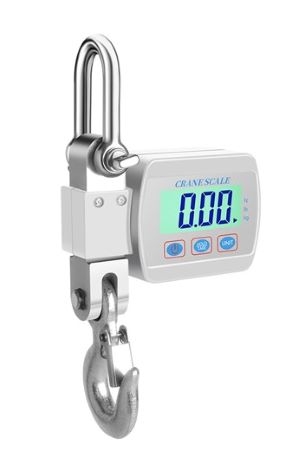
-
Digital electronic crane scales
Digital electronic crane scales are renowned for their accuracy and ease of use. These weighing scales feature advanced load cell technology that provides precise weight readings displayed in real-time on a large, easy-to-read screen. Many models offer functionalities like tare weighing, which allows users to subtract the weight of the hook or sling, ensuring only the load weight is measured. Their lightweight design and built-in rechargeable batteries make them portable, while rugged construction ensures durability in industrial settings. Additionally, some digital models come with data logging capabilities, allowing users to track weight history for inventory management and compliance purposes. -
Industrial crane scales
Industrial crane scales are built to withstand the demands of heavy-duty applications. These hanging scales typically have high weight capacities, often exceeding several tons, making them suitable for lifting heavy machinery, steel beams, and bulk materials. Constructed from durable materials like stainless steel or alloy, they are resistant to corrosion and wear, ideal for harsh environments. Many industrial crane scales feature advanced safety mechanisms, such as overload alarms and protective enclosures, to ensure safe operation. Their versatility means they can be integrated into various processes, from manufacturing to logistics, providing consistent and reliable measurements. -
Wireless crane scales
Wireless crane scales offer unparalleled convenience with their remote monitoring capabilities. By utilizing wireless technology, these crane scales can transmit weight data to a receiver or mobile device, allowing operators to monitor loads from a safe distance. This feature is particularly useful in environments where visibility may be limited or for operations that require frequent movement. Many wireless models come with advanced features such as Bluetooth or Wi-Fi connectivity, enabling seamless integration with inventory management systems or software for real-time data tracking. - Portable crane scales
Portable crane scales are ideal for on-the-go applications, offering flexibility and ease of use in various locations. Their lightweight and compact design makes them easy to transport, allowing operators to quickly set them up wherever needed. Many portable models are battery-operated, eliminating the need for external power sources and enabling use in remote areas. Despite their size, these load scales often provide accurate weight measurements and include features such as simple controls and clear displays for easy operation. They are perfect for contractors, outdoor events, and any situation requiring temporary weighing solutions, ensuring that users can efficiently manage loads without sacrificing accuracy.
Each type serves unique needs, ensuring efficient and safe weight management in diverse applications.
Using a Hanging Weighing Scale
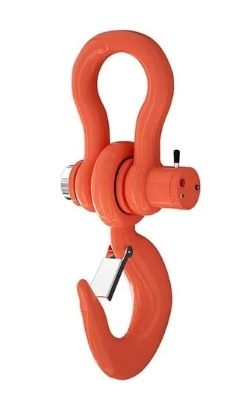
To use a hanging weighing scale, first ensure the scale is securely attached to a stable overhead support, such as a hook or beam, that can bear the weight of the objects you intend to weigh. Turn the hanging scale on, and if it has a digital display, allow it to calibrate and show zero. If you're using a container or any additional equipment, use the tare function to zero out their weight before measuring the actual item.
Once ready, hang the object to be weighed on the crane scale’s hook, ensuring it is centered and balanced to avoid inaccurate readings. Wait for the weight to stabilize, and read the measurement from the digital screen or dial. If the scale supports wireless functionality, you can monitor the readings remotely for convenience. After use, gently remove the object and power off the crane scale to conserve battery.
Hanging Weighing Scales Working Principle
A hanging weighing scale measures the weight of an object suspended from its hook by converting the gravitational force into a readable value. The central component of the crane scale is a load cell, which senses the tension exerted by the weight. When an object is hung from the scale’s hook, the force of gravity causes the object to pull downward, creating tension in the load cell. This tension generates a small deformation in the load cell’s material, changing its electrical resistance.
This change in resistance is processed by the hanging scale’s internal circuitry, which amplifies and converts the signal into a weight reading. The weight is then displayed on the digital screen or dial.
Hanging weighing scales are typically equipped with a tare function, allowing users to zero out the weight of containers or additional attachments, providing an accurate net weight of the item being measured. Depending on the model, crane scales can also include overload protection to prevent damage when the weight exceeds the device’s maximum capacity.
Used widely in industries such as fishing, agriculture, and manufacturing, crane scales offer a simple yet efficient method for weighing items in both indoor and outdoor settings.


